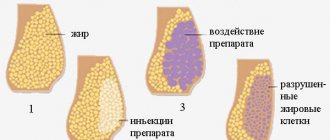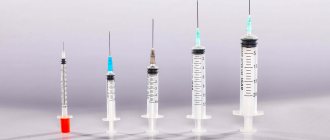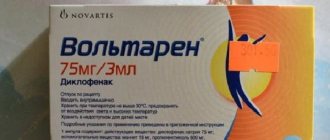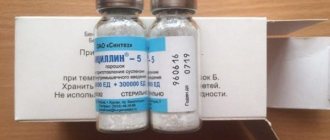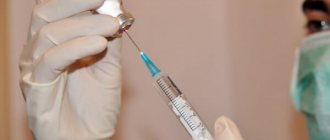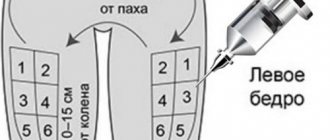Conservative treatment methods are an integral component of the treatment program for eye diseases. One type of such treatment is intravitreal injections - a method in which medications are injected directly into the eye cavity through injections. This type of treatment is indicated for patients with pathologies of the posterior part of the eye (retina, optic nerve, vitreous) due to the fact that drops and tablets for these diseases are much less effective.
A drug introduced into the eye cavity requires the use of a smaller amount and a lower concentration of the drug substance, while it becomes possible to preserve the medicinal properties of the drug for a long time (from two weeks to two months) directly at the site of the lesion, in this case - inside the eye.
Our specialized ophthalmology center is one of the most experienced medical institutions providing services to patients with retinal pathologies. Every month, hundreds of microsurgical operations are performed within the walls of our clinic; they are performed by highly qualified specialists with many years of clinical experience.
How does the procedure work?
In terms of their effectiveness, inravitreal injections are comparable to some types of vitreoretinal operations. The procedure requires sterile conditions and therefore must be performed in a specially equipped suitable room, such as an operating room. To perform injections into the eyeball, local anesthesia is used with eye drops, in order to avoid complications, the patient is prescribed antiseptics.
During the administration of the drug into the eye cavity, an anesthesiologist is present in the operating room, who monitors the patient’s vital functions and ensures the proper level of pain relief for the patient. The requirements for asepsis and antisepsis during intravitreal injection manipulation are the same as when performing vitreoretinal surgery and must comply with international standards for intraocular surgical interventions.
At the initial stage, the patient's eyeball is fixed using an eyelid expander, after which the doctor marks the area for future intraocular injection in the lower outer quadrant of the eyeball, 3.5 mm from the limbus. This allows the doctor to avoid future trauma to intraocular structures (lens, ciliary body, retina) and reduce the likelihood of intraocular complications. The drug is injected directly into the vitreous body of the eye through the outer membranes of the eye; for this purpose, special needles are used to prevent the drug from leaking out when the needle is removed. Due to the fact that the manipulation is carried out using an operating microscope, the doctor controls the process of drug administration and the depth of needle insertion. All of the above points make the procedure safe and minimize the risks of complications. Equally important is strict adherence to the recommendations of the attending physician in the postoperative period and regular postoperative monitoring.
Our clinic is equipped with the most modern equipment; we provide European-level services without queues and at affordable prices. When performing medical procedures, our specialists use the best equipment available today, including disposable instruments.
Intravitreal injections
One of the effective and low-traumatic methods of treating many diseases of the organ of vision is intravitreal injections. It consists of injecting the drug directly into the vitreous body of the eye, which allows for maximum effectiveness. This method is used to treat macular edema, retinal vascular diseases, hemorrhages, inflammatory processes, macular degeneration, etc.
Performing intravitreal injection at the GLAZ clinic and. Fedorov
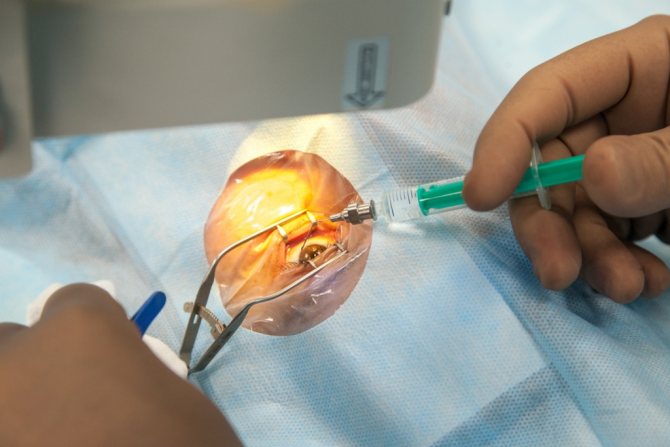
This treatment method is quite complicated, so it is better to perform the procedure only by an experienced ophthalmic surgeon.
Intravitreal injections are performed only in an operating room under the control of an operating microscope and are a vitreoretinal operation. To ensure painless administration of the drug, local anesthesia in the form of drops is used. In addition to the ophthalmic surgeon, an anesthesiologist must be present in the operating room to monitor the patient’s vital functions throughout the operation.
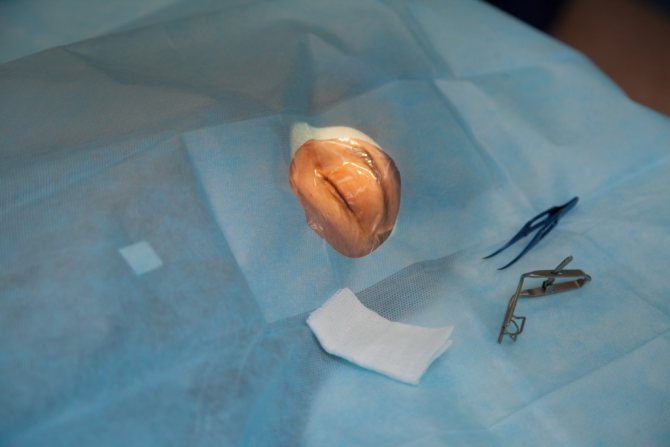
At the first stage, an eyelid speculum is installed in the eye, after which the exact puncture location is determined using an eye marker. Next, the drug is injected through the conjunctiva and sclera directly into the vitreous body of the eye.
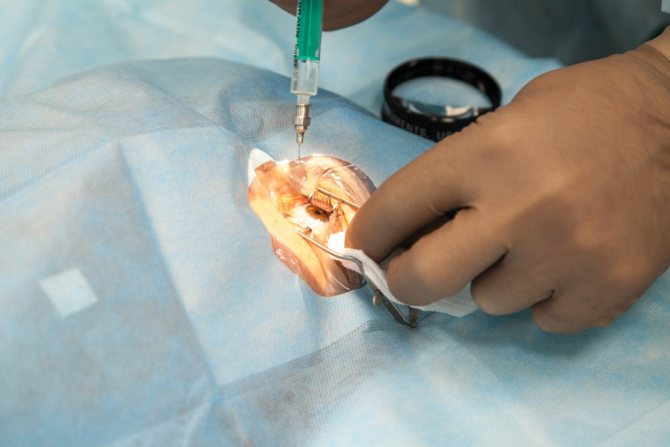
Accurate determination of the puncture site and adherence to the technique of its implementation help prevent complications in the postoperative period.
After the injection, intraocular pressure is measured and drops of antibacterial and anti-inflammatory action are prescribed.
Intravitreal administration of Lucentis
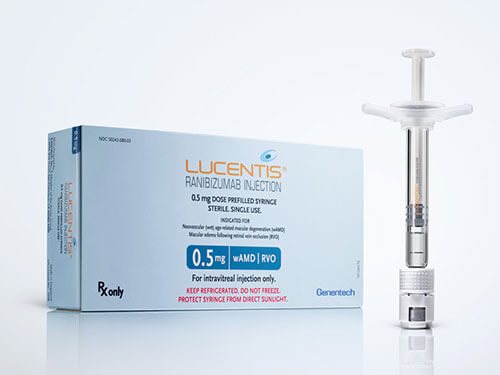
Lucentis has been used for the treatment of macular edema and macular degeneration for many years.
Ranibizumab is the active ingredient of the drug, which has the unique properties of reducing the growth of pathological retinal vessels in age-related macular degeneration and normalizing retinal thickness in macular edema. After administration, Lucentis penetrates directly into all layers of the retina and affects the affected area and stops the progression of the pathology. After exposure to the drug, macular edema decreases, further retinal hemorrhages and enlargement of the affected area are eliminated.
The effectiveness and safety of Lucentis is due to the fact that it was created specifically to solve ophthalmic problems of a certain spectrum.
After undergoing a complete examination of the visual system and confirmation by an ophthalmologist of the need to use intravitreal injection of Lucentis. In most cases, to normalize the situation, it is necessary to undergo a course of procedures consisting of 3 injections of the drug. The doctor draws up an individual schedule for drug administration procedures and predicts the outcome of this treatment. Lucentis is administered once a month. After examining the results of treatment, the number of injections can be increased, and after completing the entire course, you must regularly monitor the health of your eyes and visit an ophthalmologist at least once every 6 months.
The cost of intravitreal administration of the drug Lucentis at the Eye Microsurgery Clinic named after Academician S.N. Fedorov"
Intravitreal administration of Eylea
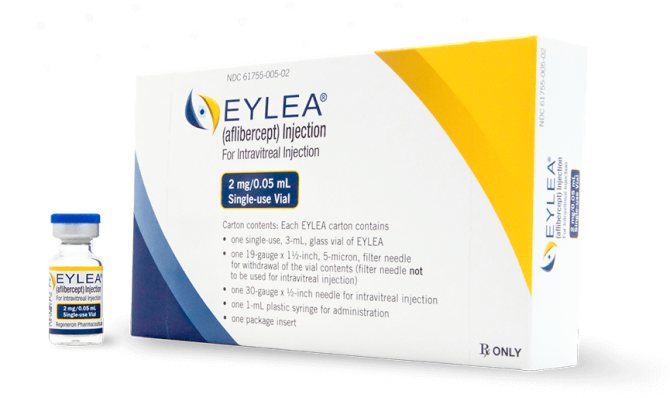
The most modern drug for solving the problems of macular edema and macular degeneration is Eylea. Its injections began to be used in Russia only in 2021. Its active substance aflibercept has the properties of reducing the growth of pathological vessels and removing fluid during macular edema. Unlike Lucentis, Eylea has a longer action, which allows injections to be performed less frequently. Also, this drug helps with any form of macular degeneration, both wet and dry, and is effective for macular edema.
In the drug, the molecules of the active substance act as a “trap”, merging with molecules of not only vascular endothelial growth factor (VEGF), but also placental growth factor (PIFG).
As with treatment with Lucentis, when prescribing Eylea, an individual injection schedule is drawn up, consisting of 3 injections. The procedures are carried out once every 2 months, and if the situation normalizes, the break can be increased by the attending ophthalmologist.
The cost of intravitreal administration of the drug Eylea at the Eye Clinic of Cerebral Surgery named after Academician S.N. Fedorov"
Intravitreal injection of the drug Ozurdex
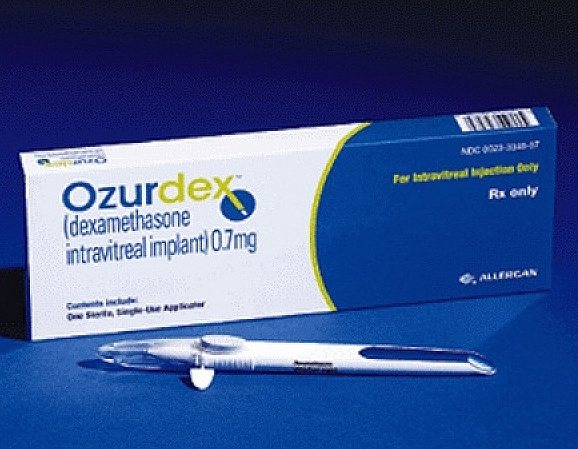
One of the most effective methods of treating macular edema is the intravitreal administration of the drug Ozurdex.
Ozurdex is an implant with a high content of the active substance Dexamethazont, which is injected into the vitreous body.
The active substance in Ozurdex has an unusual method of influencing the damaged area - it is released in small portions, due to which the duration of the treatment effect is significantly increased.
This drug not only eliminates the problem of macular edema, but also affects its cause, which eliminates or significantly reduces the risk of relapse of the disease, and also has an anti-inflammatory effect, which
To treat macular edema, only 1 injection of Ozurdex is sufficient. After the procedure, the implant lasts for one and a half months, and the therapeutic effect lasts up to 6 months. In complex therapy of macular edema, retinal laser coagulation may be prescribed.
The cost of intravitreal administration of the drug Ozurdex at the Eye Microsurgery Clinic named after Academician S.N. Fedorov"
At the Eye Microsurgery Clinic named after Academician S.N. Fedorov" injections of all listed drugs are performed. The procedure schedule is selected individually for each patient after a complete examination of the visual system.
The main task of the specialists at the Eye Microsurgery Clinic named after Academician S.N. Fedorov" when working with patients suffering from age-related macular degeneration and macular edema - to prevent blindness and restore vision. In our clinic we use the most modern and effective methods of treating these diseases.
What drugs are used for intravitreal administration?
The most commonly used drugs for administration into the eye cavity are Lucentis, Ozurdex, Kenalog, Aylia and Gemaza. Antibacterial drugs can also be used for intravitreal administration.
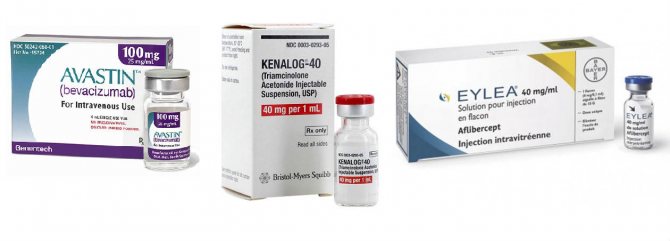
The drug Lucentis is used to treat the wet form of age-related macular degeneration (AMD), as well as in patients with neovascular membrane (due to previous inflammation of the eye, high myopia, etc.), diabetic retinopathy, and occlusions of the central retinal vein. The action of the drug Lucentis is aimed at preventing the growth of abnormal defective vessels and associated complications in the form of multiple hemorrhages in the eye cavity, retinal detachment and loss of vision. In most cases, although not 100% of cases, Lucentis helps stop the progression of visual acuity deterioration and prevent blindness. For the same purpose, intravitreal administration of the drug Aylia is used.
Ozurdex is a drug used to treat macular edema. The dosage form of the drug Ozurdex - an implant developed for intravitreal administration - ensures long-term preservation of the therapeutic effect. Thanks to this, a prolonged, powerful anti-inflammatory and anti-edematous effect is achieved, which contributes to long-term improvement of vision.
Kenalog is a glucocorticosteroid for intravitreal administration that has an inhibitory effect on all phases of the inflammatory process in the eye cavity. In ophthalmology, the drug is used for administration parabulbarly and into the sub-Tenon's space. Kenalog is characterized by a prolonged therapeutic effect and the absence of a systemic effect on the body.
Gemaza in the form of intravitreal injections is used to treat occlusion of the main vessels of the retina, hemorrhage in the eyeball (hemophthalmos, hyphema) and in the retinal area, adhesions after surgical treatment of glaucoma. The drug provides fibrinolytic and thrombolytic effects.
Eye microsurgery
Eye microsurgery is reliable, safe and effective.
The human eye is a complex and fragile organ.
Any surgical intervention on it is potentially dangerous. Inept actions, incorrect techniques, poor-quality equipment - all this is fraught with damage to the eye structures and irreversible loss of vision. Fortunately, the problem of complications in ophthalmology is partially solved with the introduction of effective and relatively safe microsurgical operations. All eye surgeries at the Miracle Doctor clinic are performed at the microsurgical level. The introduction of microsurgical technologies has made it possible to penetrate such hard-to-reach areas of the eyeball as the vitreous body, retina and posterior pole. Glaucoma, cataracts, myopia, astigmatism, retinal detachment, tumors and foreign bodies - this is not a complete list of indications for microsurgical operations in our clinic.
Advantages of performing microsurgical ophthalmic operations at the Miracle Doctor clinic:
- Doctors Our ophthalmologists are doctors of the highest category. Some of them have a Ph.D. in medical sciences. These are excellent professionals in the field of microsurgical operations with extensive surgical experience.
- Equipment Microsurgical operations are impossible without modern equipment. The LEICA operating microscope we use has high resolution and is easy to use, and the INFINITI phacoemulsifier is indispensable for operations on the lens, since the use of torsion ultrasound is the most gentle method in modern ophthalmology.
- Consumables Along with laser, ultrasound, liquid nitrogen and radio waves, traditional suture material is also used in modern eye microsurgery. Our thinnest needles and synthetic threads reliably fix the eye tissues and do not injure them. We use artificial lenses and consumables for them only from the world's leading manufacturers (USA, Germany).
Advantages of performing microsurgical techniques at the Miracle Doctor clinic:
- Optimal terms of treatment and recovery The introduction of microsurgical technologies has made it possible to reduce the duration of treatment and speed up the recovery of the eye as a functional organ. Thanks to this, many operations are quite feasible on an outpatient basis. The patient does not need hospitalization, deep anesthesia and long-term postoperative observation: he can return home the same day.
- Low trauma Some technologies, for example, laser, torsion ultrasound, have made it possible to penetrate deep into the internal environments of the eye without opening or damaging the eyeball.
- Preserving vision Microsurgical operations are inherently organ-preserving. We try to ensure not only the anatomical safety of the eye, but also full vision.
Microscopic ophthalmological operations at the Miracle Doctor clinic
The range of microsurgical interventions we perform is quite wide. Along with laser fixation of the retina, implantation of an artificial lens and other operations that have already become commonplace, we carry out new methods of intervention on the iris, vitreous body and eye chambers. You can obtain more detailed information on microsurgical methods from our ophthalmologists.

